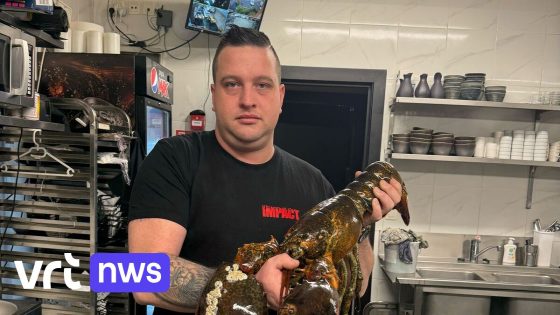A giant lobster named ‘Mignolet’ was set to be the star attraction at Jo Taveirne’s restaurant in Harelbeke, Belgium. Named after Club Brugge goalkeeper Simon Mignolet, the lobster was flown in from Canada. However, on February 20, 2025, tragedy struck when the lobster was found dead just a day before its planned return.
- Lobster named Mignolet after goalkeeper
- Purchased from a fishmonger in Canada
- Customers criticized Jo for keeping lobster
- Decision made to return the deceased lobster
- Lobster possibly over 70 years old
This unexpected turn of events raises questions about the care and handling of exotic seafood in restaurants. How can we ensure that such creatures are treated humanely?
The Controversial Fate of Lobster ‘Mignolet’ Sparks Outrage
What happens when a restaurant’s marketing idea goes wrong? The story of lobster ‘Mignolet’ has captured attention across borders. Initially intended as a centerpiece for Jo Taveirne’s eatery, this massive crustacean became a symbol of animal rights debates.
The Impact of Animal Welfare Concerns on Restaurants
The death of ‘Mignolet’ not only shocked locals but also highlighted broader issues regarding how restaurants handle live seafood. As more consumers become aware of animal rights, establishments must adapt their practices. Here are some key considerations:
- Understanding customer expectations around humane treatment.
- Implementing better care protocols for live seafood.
- Educating staff about ethical sourcing and handling.
- Engaging with community feedback to improve practices.
The Role of Public Perception in Culinary Choices
Public perception plays a crucial role in shaping culinary Trends today. Customers increasingly favor establishments that prioritize sustainability and ethical treatment of animals. With social media amplifying voices against perceived cruelty, how can restaurants navigate these waters?
Lobster Handling: Best Practices for Restaurants
Caring for lobsters requires specific knowledge and skills to ensure their well-being until they reach diners’ plates. Here are best practices that should be followed:
- Maintain optimal water temperature and salinity levels.
- Avoid overcrowding tanks to reduce stress among lobsters.
- Regularly monitor health signs to catch any issues early.
The Future of Seafood Dining: Balancing Tradition with Ethics
The future landscape of seafood dining will likely shift towards greater transparency and responsibility. Diners may demand more information about where their food comes from and how it is treated prior to serving. Will your favorite restaurant adapt?
This incident serves as a reminder that every choice made by restaurants impacts not only their reputation but also consumer trust and loyalty moving forward.
































